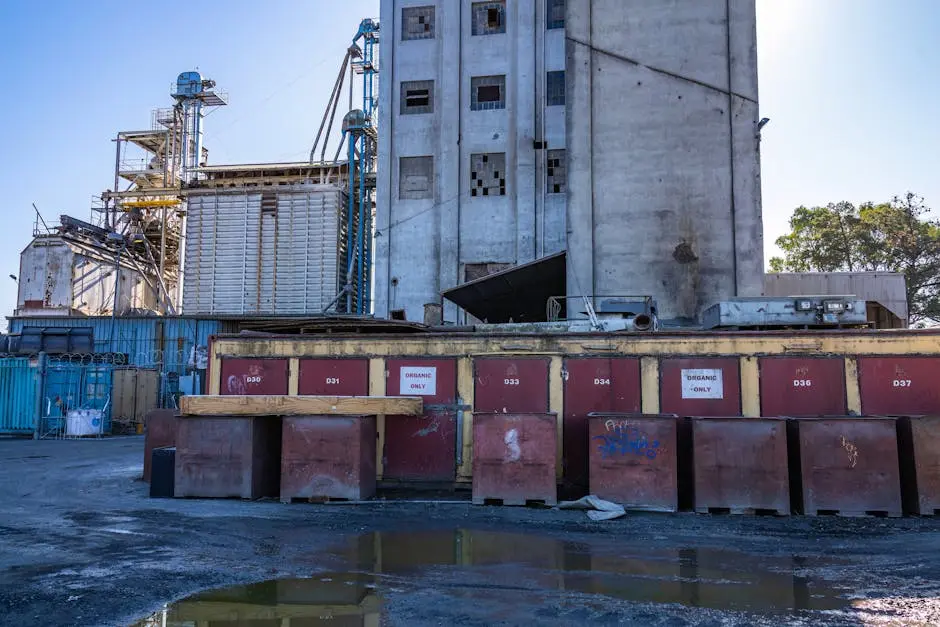Effective construction waste management is essential for maintaining a clean, safe work environment and ensuring your project runs smoothly. Utilizing a large dumpster can significantly streamline this process, but knowing how to optimize its use is key.
Understanding Construction Waste Management
Construction sites generate a variety of waste materials, and proper management is crucial to avoid delays, fines, and environmental damage. From planning to disposal, understanding this process is the first step towards efficient waste management.
Anytime a building is pulled down or constructed from the ground up, a trail of trash and construction debris is inevitably created. Proper management involves strategic planning right from the onset to minimize waste. Prioritizing waste reduction not only saves money but also aligns with improved waste management practices. This means integrating more effective strategies to carefully assess, sort, and, where possible, repurpose materials.
By fostering a culture that emphasizes waste minimization, the project can significantly reduce costs associated with materials and disposal. Skilled subcontractors, for instance, ensure precise measurements to prevent wastage. When deconstruction is opted for over demolition, materials like timber and fixtures can be preserved, creating a cycle of reuse that benefits future projects and reduces the burden on local landfills.
The Role of Large Dumpsters
Large dumpsters are essential for construction sites due to the volume and variety of waste produced. They offer an organized way to collect, sort, and dispose of debris, which is integral to maintaining a tidy and functional site environment.
The capability of a large dumpster to handle various types of waste—from concrete rubble to leftover packaging material—is invaluable. These dumpsters mitigate the risk of project delays and fines by ensuring all waste is contained and disposed of lawfully. Furthermore, they promote safety on site by reducing tripping hazards and clearing pathways for equipment and personnel. In keeping spaces organized, large dumpsters contribute significantly to efficient waste management processes.
Selecting the Right Size and Type
Choosing the right size of dumpster depends on your project’s scope and specific needs. It’s important to consider factors such as the volume of waste, types of materials, and space availability on site for the dumpster.
Investing in a dumpster that is too large or too small can result in unnecessary costs, as overage fees and additional delivery expenses may occur. A well-calibrated decision about the dumpster’s size facilitates proper waste containment and supports the effective disposal of materials to avoid any potential fines. Working with experienced dumpster rental companies can provide insights into selecting the most efficient option to fit the anticipated waste output of your project.
Best Practices for Optimizing Use
To make the most of your large dumpster, establish a clear waste management plan that includes sorting materials, scheduling regular pickups, and training staff on efficient waste disposal practices.
Implementing a comprehensive recycling program can greatly enhance the effectiveness of your waste management system. Identifying recyclable materials—like cardboard, glass, and plastics—allows for separate collection and disposal, reducing the amount of waste sent to landfills. Coordination with your dumpster rental company to obtain a separate receptacle for recyclables is crucial. Such practices not only reduce landfill waste but also support sustainability goals.
Furthermore, consistent monitoring of waste streams and ensuring contractors are aligned with waste sorting guidelines will contribute to maximal efficiency. Through training sessions, staff can be informed of the importance of minimizing waste and effective sorting techniques, fostering an approach that respects both budget limitations and environmental responsibilities.
Environmental Considerations and Regulations
Adhering to environmental regulations is crucial when managing construction waste. Implement recycling practices, comply with local disposal laws, and consider eco-friendly waste solutions to reduce your project’s environmental footprint.
Incorporating sustainable practices at the construction site not only prevents legal repercussions but also contributes positively to community health and environmental well-being. Strategies like recycling and donating usable materials can dramatically lessen the impact on landfills. Material donations to organizations provide opportunities for aiding local development projects while achieving valuable tax write-offs which can ease the financial burden on your project.
Cost Management
Efficiently managing construction waste can help control costs significantly. By tracking waste, opting for long-term dumpster rentals, and negotiating service agreements, you can keep expenses within your project’s budget.
Monitoring the flow and type of waste from the inception of the project helps in mitigating unexpected costs. Choosing an appropriately sized dumpster ensures that all expenses related to disposal are contained, maximizing budget allocations for other crucial project needs. Additionally, by collaborating with experienced service providers, project managers can explore solutions that optimize both financial expenditure and resource use, leading to more cost-effective operations.
Maximizing Efficiency with Large Dumpsters
Effectively managing construction waste with a large dumpster can transform your site’s efficiency, sustainability, and safety. By planning ahead, understanding regulations, and opting for environmentally friendly practices, you ensure a seamless waste management process.

